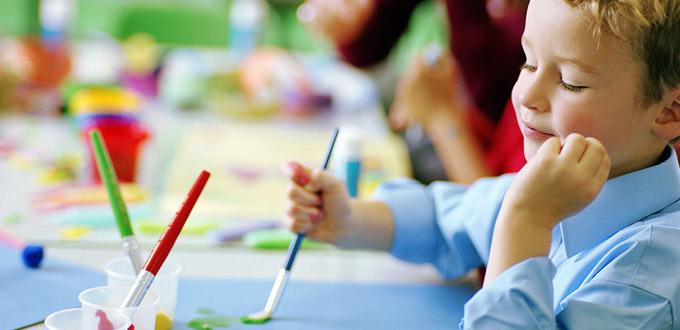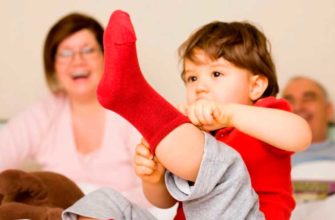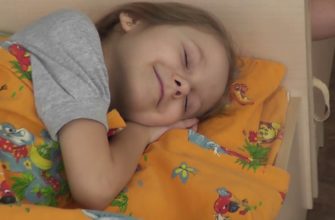When a child begins to hold a writing object in his hand, he always seeks to leave a mark. Any surface can become a canvas for a young artist: new wallpaper, furniture, and flooring. The desire to depict everything and everything is a normal stage in the development of the child, so parents will have to be patient and watch how the images and plots of children's drawings change. At a certain point, the child begins not just to scribble paper, but to portray all kinds of unknown creatures. Such drawings reflect the inner world of a little man, and today we will understand how to "read" a children's drawing.

As the drawing is located on the sheet
The whole sheet space can be represented as a coordinate system with two axes known from school. The point of intersection is the center of the leaf. The most favorable option is when the drawing is in the center.
The vertical axis is the child’s self-esteem and his sense of his position in the team.
- The picture is shifted vertically upward - high self-esteem, a desire to win a high position in the team (sometimes such children suffer precisely from the fact that their own high opinion of themselves is not shared by others).
- The picture is shifted vertically downward - low self-esteem, timidity, low self-confidence, precarious situation in the team (the child is not recognized in the team.
The horizontal axis is the axis of time. The left side of the axis is associated with the past, and the right with the future.
- The figure is located to the left of the center - the child is more focused on the past. Such children are more “in themselves”, make few plans and dream little, show little activity.
- The drawing is located to the right of the center - the child is directed to the future, he is often on a positive wave, very active and active.
We analyze the elements of the image
Head
It matters the position of the head and face.
- If the head is turned to the right, the child is aimed at the realization of his plans and plans. If he conceived something, he tries to realize it, even though he throws some ideas halfway.
- If the head is turned to the left - plans and ideas basically remain in the head, the child makes no attempt to implement his ideas because of indecision.
- If the head is straight - the child is focused on himself, selfish, has a high self-esteem.
The ears
If ears are attached to the head, this means that the child is ready to listen. This can be manifested as a cognitive interest (listens to information), or it can be shown as an interest in the opinions of other people (listens to others in everything).
Eyes
In the picture, the eyes are a symbol of fear, especially if they are large, clearly drawn, circled many times. Visible and large eyes are a symbol of intense fear. Traced eyelashes speak of some coquetry, attention to one’s own appearance, desire to please.
Mouth
The mouth can be drawn in different ways: open, closed, just a line or real lips.
- Clearly painted lips speak of the sensuality of the child.
- If the emphasis is on language, the child is very talkative.
- Sometimes lips and tongue are painted. This indicates the severity of both qualities.
- If the mouth is open, but there is no tongue or lips, especially if there is hatching, the child is very fearful, can easily be scared, constantly doubts and does not trust. This is especially true for adolescents.
- Traced teeth indicate verbal aggression. This aggression is usually protective in nature, that is, the child can respond if something happens.
Forehead
A large and high forehead is a sign of the predominance of a rational beginning, erudition.
Unusual details on the head
Sometimes children draw on their heads different details that can also be decoded.
- Horns - aggressiveness or the desire to defend oneself, the ability to "fight" when necessary.
- Feathers - the desire to attract attention, stand out, the desire to decorate yourself.
- Hairstyle, mane or hair - the child seeks to indicate what gender he is, to emphasize this.
Limbs
A painted creature can stand on its feet or legs. Their appearance also speaks of the internal state of the child.
- Massive, strong limbs indicate that the child stands firmly on his feet in life. He has something to rely on, he carefully makes decisions, ponders his actions.
- Weak, thin legs or their absence indicate flimsy internal positions, beliefs. The child makes decisions rather impulsively, his judgments are not deep.
Special attention should be paid to how the limbs connect to the body.
- If the connections are well drawn, the child carefully controls his reasoning, thinks logically and consistently.
- If the connections are drawn carelessly or completely absent - the child is slightly out of touch with reality, his thoughts are chaotic.
In addition to the legs or feet, the child can draw other limbs. They can serve as decoration, or can carry some function.
- Wings, carapace, additional extremities indicate that the child is attracted to various fields of activity, he is comprehensively developed, is interested in many, easily makes acquaintances. Such children are self-confident and easily take their place in life.
- Drawn tentacles indicate that the child almost always acts boldly.
- Various bows, decorations in the picture reveal in the child a desire to attract attention, demonstrativeness and mannerism.
An interesting element in the image is the tail:
- If the tail is drawn on the right - the child has a high self-esteem, he positively perceives himself and his actions. If on the left - the child is prone to self-criticism.
- If the tail looks up - the child is active and confident, if down - the child is depressed, unhappy with himself.
"Three trees"
Studying children's drawings, one can not only analyze what a child paints spontaneously, but also give a task. Very simple and informative is the picture test "Three Trees".
Invite the child to draw three trees on a sheet, and then name which of the trees is dad, who is mom, and who is the kid himself (there may be more trees, according to the number of family members). In this figure, we will be interested in the size of the trees. The key to the solution lies in the fact that the child does not correlate the trees with family members in terms of physical growth / size, but in terms of the share of influence that this family member has. So, for example, if a child associates himself with the smallest tree - there is nothing to rejoice about, because this suggests that the child’s opinion in the family is not significant. Parents should give the child more independence in decision-making and listen to his wishes. The most harmonious picture will be when all the trees are equal. Yes, of course, a child can compare himself with a small tree because small itself, but the meaning is deeper. Here a little more is written about this - http://grigorieva-elena.ru/metodika-test-tri-dereva/
Mystery of color
Decoding colors is one of the most difficult.Each color has an ambiguous psychological significance, and in addition, for each child, the meaning of color can be different. That is why it is necessary to decipher the meaning of color based on the information already obtained from the drawing: color can emphasize the severity of the identified qualities or give them a special psychological meaning.
Psychologically, colors are usually interpreted as follows:
- Red color is a symbol of passion, love, but in some cases it symbolizes anxiety, aggression, a strong negative and a sense of danger.
- Blue is the color of reason, logic, order. His other pole is fantasy, frenzy.
- Yellow is the color of love of life, a symbol of openness and freedom. Sometimes it represents jealousy, deceit, envy.
- Orange color is very energetic, a sign of strength and personality maturity. Its flip side is militancy and the desire for struggle.
- Green color of growth, growing up, hopes for the best. Sometimes denotes immaturity or soreness.
- Violet is a mysterious color, a symbol of harmony and secret knowledge. May indicate anxiety, depression, withdrawal.
- Black can be solid and solemn, and can be mournful.
- White is the color of purity, but sometimes it is a sign of inner emptiness and mourning.
- The gray color is generally neutral, its negative interpretation is confusion, melancholy.
Comparing the results of all methods of working with children's drawings, you can find out about the child that which is hidden deeply and with the naked eye is not visible. Any identified experiences and problems must be worked through. The first medicine is mother's love, care and attention. Deeper problems are best solved with a specialist. Spend as much time with your baby as possible, play and draw together - this will help to better see the problems and give an understanding of how to help the child.
READ ALSO: How to teach a child to distinguish colors - 5 techniques
Psychology of children's drawing
[sc: ads]
Secrets of children's drawing
We also read:
[sc: rsa]
- 25 tips for raising a child in love and peace;
- Top 10 Parent Mistakes in Parenting;
- Raising a child up to a year: advice to parents;
- 10 tips to stop yelling at your children;
- 10 mistakes of parents in raising children;
- How to say “NO” and “NO” to the child;
- Question from mothers: “What should I do if I constantly scream at my child?” -https://kid.htgetrid.com/en/psihologiya-detey/chto-mne-delat-esli-ya-postoyanno-krichu-na-svoego-rebenka.html.









It is also necessary to analyze the drawing itself, whom the child paints, in what colors, interpretations. My daughter often painted cats and dogs in dark tones, after a while they eventually found out that she had nightmares, but she was afraid to talk about them.
According to the children's drawing, a competent psychologist can tell a lot.My son loved orange color, literally the whole picture could only be orange. And in fact, he is very energetic and even sometimes belligerent.